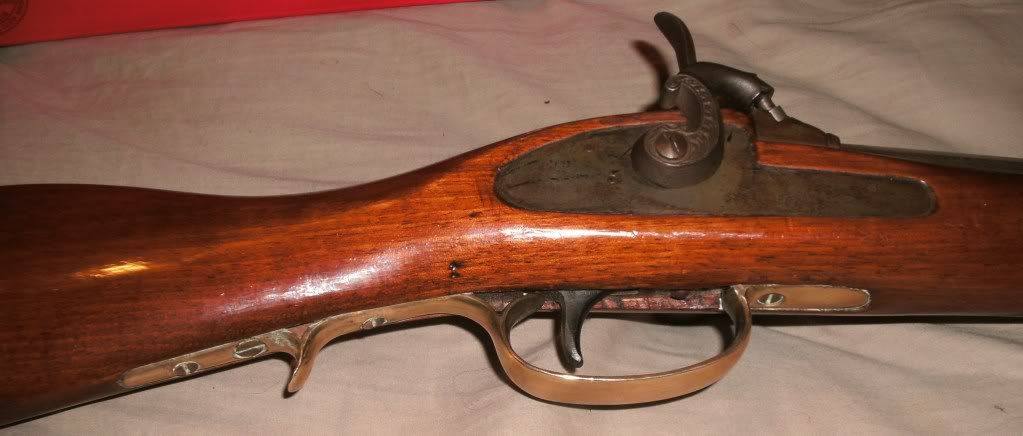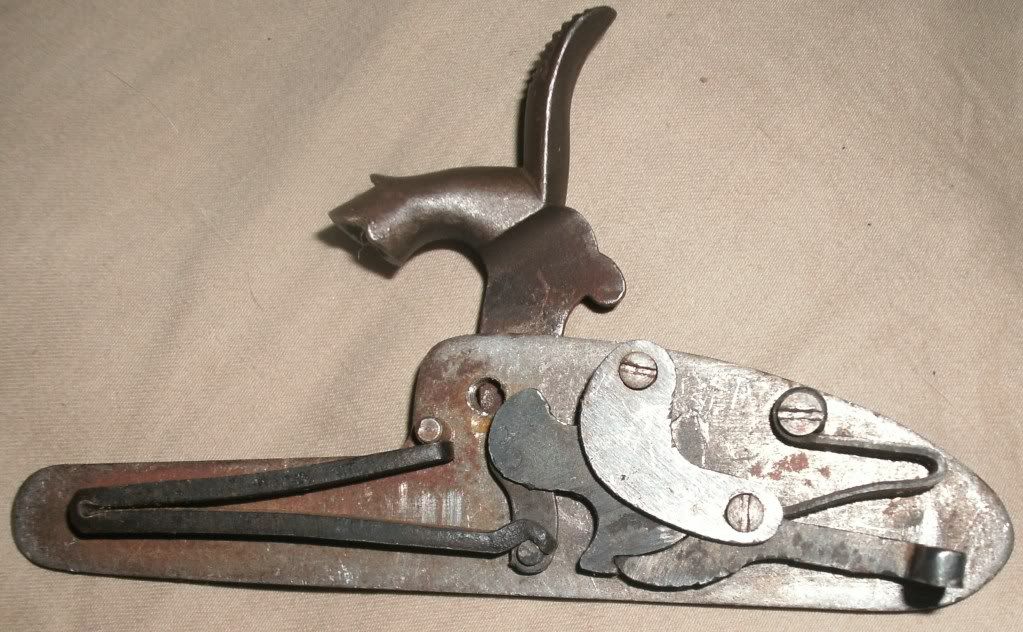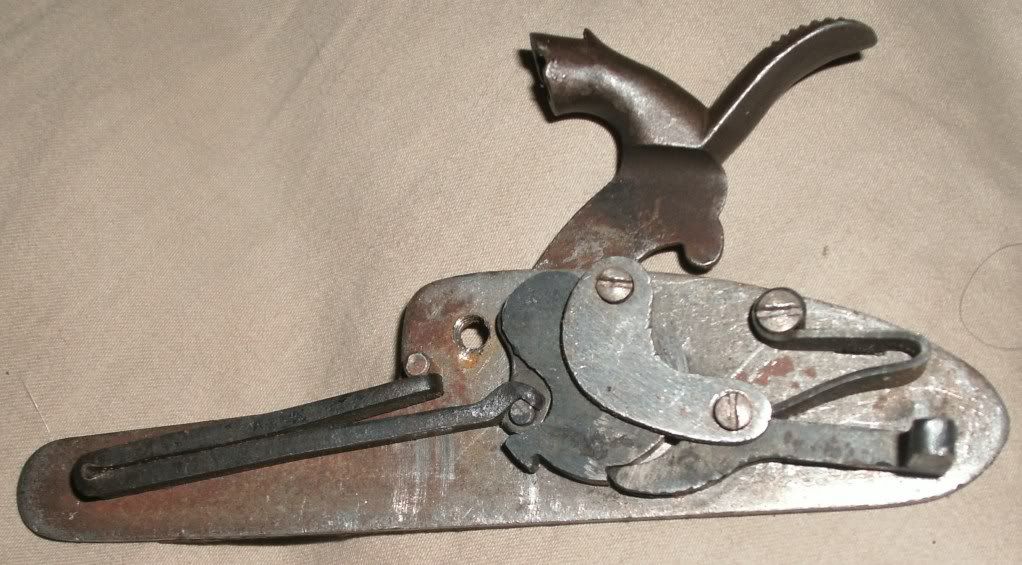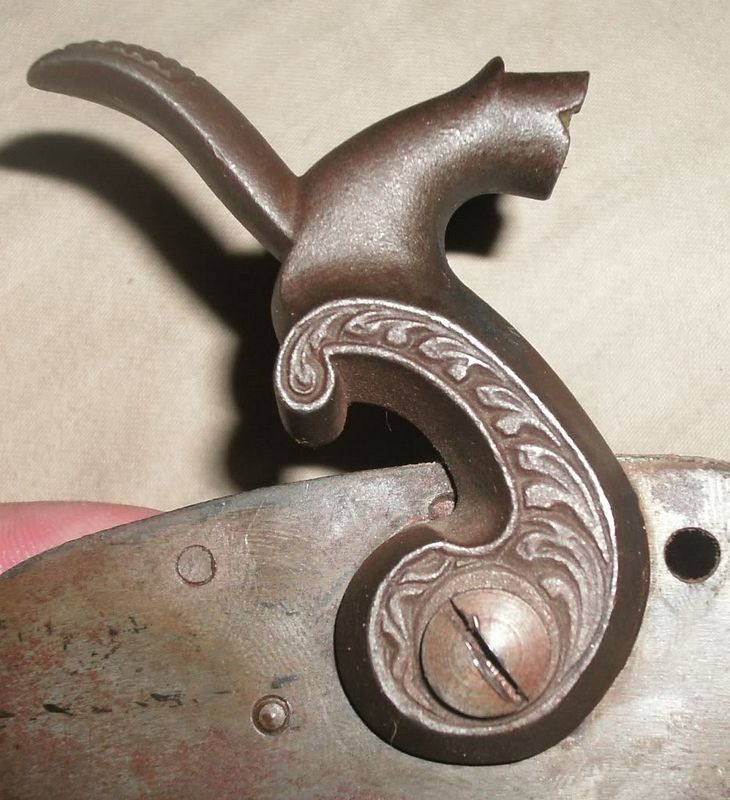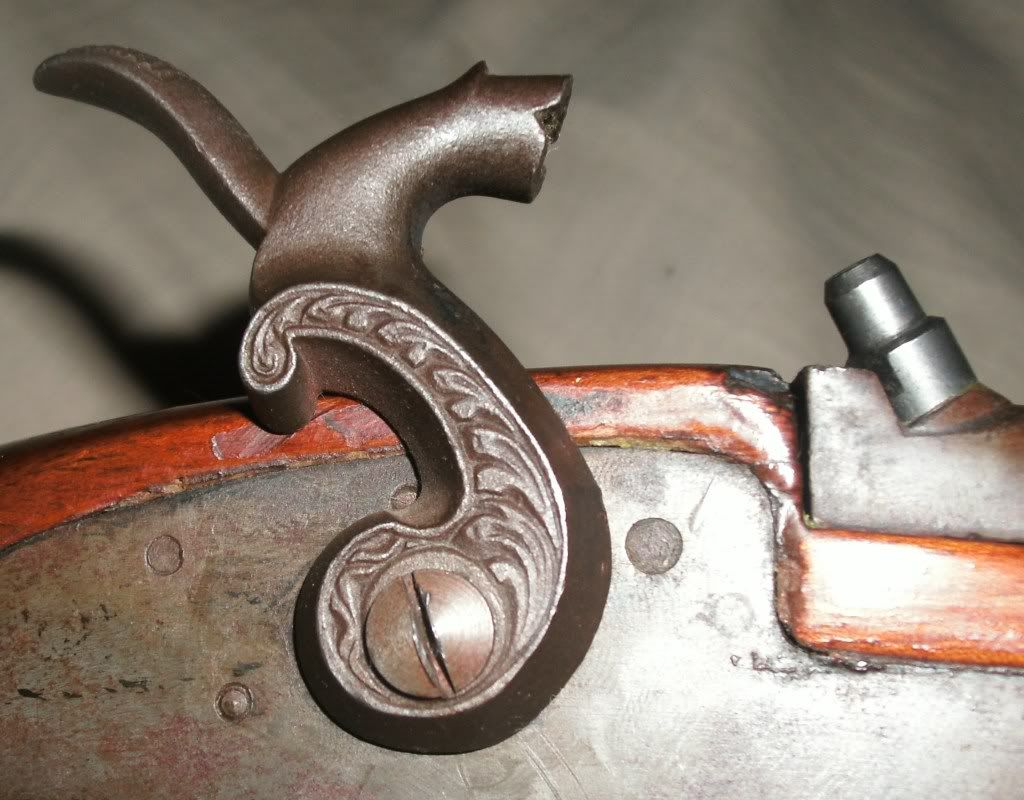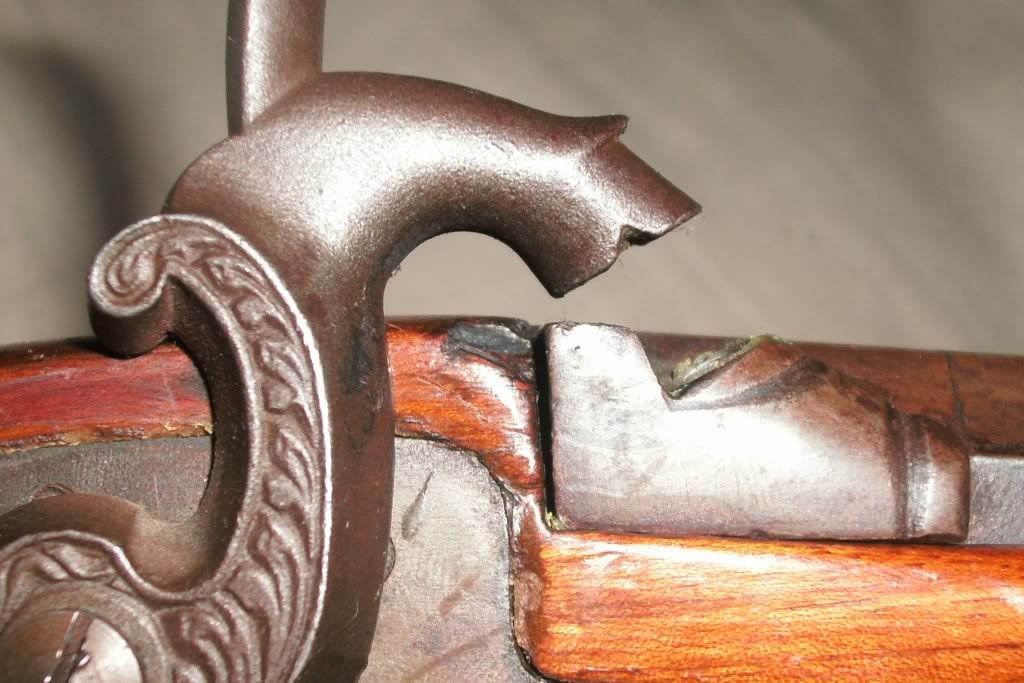PreserveFreedom
40 Cal.
- Joined
- Aug 13, 2011
- Messages
- 206
- Reaction score
- 3
I have a .45 cal Percussion Rifle that I was told looks like a Markwell Hawken from the 1970's. My dad built it from a kit some time around 1970 so that is probably right. I would love to keep it as a regular carry rifle in my truck, but there is no half-cock on it so I wouldn't be able to cap the nipple until I was ready to fire. Does anyone here know if there is a way to add a half-cock to a lock that does not have one? Maybe just adding a notch somewhere? Here are pics of the rifle:


